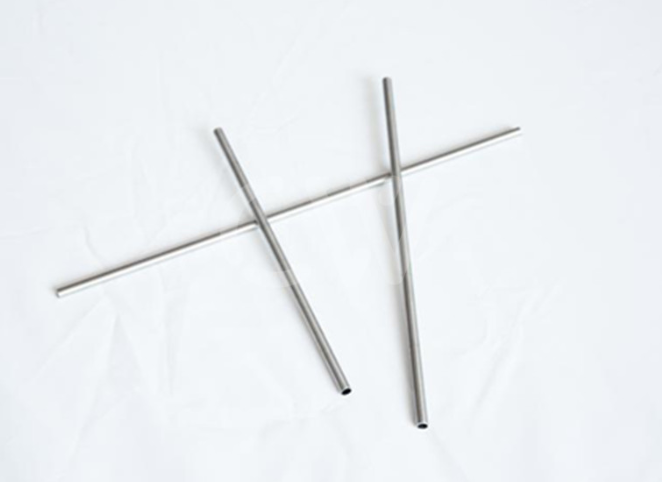T: +86-512-58335585
E: sale@chewit.cn
E: sale@chewit.cn
Shuangshan Road, Jingang Town, Zhangjiagang City, Jiangsu Province, China
stainless Steel
ASTM A269/312/249/554/789/790/268
304/316/316L/304L
| Availability: | |
|---|---|
| Quantity: | |


| Mechanical Performance | ||||
| Steel Grade | YS(Mpa) | TS(Mpa) | EL(%) | HRB |
| ASTM A269 ASTM A312 ASTM A249 ASTM A554 GB/T 12770 ASTM A789 ASTM A790 ASTM A268 | ≥205 | ≥515 | ≥35 | ≤90 |
| ≥170 | ≥485 | ≥35 | ≤90 | |
| ≥205 | ≥515 | ≥35 | ≤90 | |
| ≥170 | ≥485 | ≥35 | ≤90 | |
ASTM A789 is a standard specification for seamless and welded ferritic/austenitic stainless steel tubing, commonly used in automotive engineering and various industrial applications.
ASTM A789 covers several grades of duplex stainless steel, each with different compositions of chromium, nickel, molybdenum, and nitrogen to achieve desired mechanical properties and corrosion resistance.
Common grades include UNS S31803 (2205) and UNS S32750 (2507).
These materials offer high strength and excellent resistance to stress corrosion cracking, pitting, and crevice corrosion.
Typical mechanical properties include high tensile and yield strength, as well as good elongation and toughness.
The duplex structure of the steel provides a good balance of corrosion resistance, making it suitable for environments where both chloride and acidic conditions are present.
High resistance to intergranular corrosion and other forms of localized corrosion.
Tubes can be produced by either seamless or welded processes. Welded tubes are typically welded from strip or plate material.
Tubes are subjected to heat treatment appropriate to the grade, generally solution annealing followed by rapid cooling to achieve desired properties.
Tubes covered under ASTM A789 are available in a variety of diameters and wall thicknesses.
Dimensional tolerances are specified to ensure the tubes meet the requirements for specific applications, ensuring uniformity and compatibility in use.
Used in exhaust systems, fuel lines, and other critical components where durability and resistance to high temperatures and corrosive environments are crucial.
Often used in turbocharger components and emission control systems.
Chemical processing equipment, oil and gas industry, heat exchangers, and pressure vessels.
Tubes are subjected to various tests to ensure quality and conformity to the specifications, including:
Hydrostatic or Nondestructive Electric Test: To check for leaks and ensure the integrity of the tube.
Mechanical Tests: Such as tensile tests, flattening tests, and hardness tests.
Corrosion Tests: To ensure the material's resistance to various forms of corrosion.
Tubes are marked with the manufacturer's name or trademark, grade, size, and heat number for traceability.
Certification documents are provided, detailing the chemical composition and mechanical properties, as well as the results of any specified tests.
ASTM A789 automotive engineering stainless welded steel tubes are designed for high-performance applications requiring a combination of strength, corrosion resistance, and durability. The specification ensures that tubes meet rigorous standards suitable for use in demanding automotive and industrial environments.


| Mechanical Performance | ||||
| Steel Grade | YS(Mpa) | TS(Mpa) | EL(%) | HRB |
| ASTM A269 ASTM A312 ASTM A249 ASTM A554 GB/T 12770 ASTM A789 ASTM A790 ASTM A268 | ≥205 | ≥515 | ≥35 | ≤90 |
| ≥170 | ≥485 | ≥35 | ≤90 | |
| ≥205 | ≥515 | ≥35 | ≤90 | |
| ≥170 | ≥485 | ≥35 | ≤90 | |
ASTM A789 is a standard specification for seamless and welded ferritic/austenitic stainless steel tubing, commonly used in automotive engineering and various industrial applications.
ASTM A789 covers several grades of duplex stainless steel, each with different compositions of chromium, nickel, molybdenum, and nitrogen to achieve desired mechanical properties and corrosion resistance.
Common grades include UNS S31803 (2205) and UNS S32750 (2507).
These materials offer high strength and excellent resistance to stress corrosion cracking, pitting, and crevice corrosion.
Typical mechanical properties include high tensile and yield strength, as well as good elongation and toughness.
The duplex structure of the steel provides a good balance of corrosion resistance, making it suitable for environments where both chloride and acidic conditions are present.
High resistance to intergranular corrosion and other forms of localized corrosion.
Tubes can be produced by either seamless or welded processes. Welded tubes are typically welded from strip or plate material.
Tubes are subjected to heat treatment appropriate to the grade, generally solution annealing followed by rapid cooling to achieve desired properties.
Tubes covered under ASTM A789 are available in a variety of diameters and wall thicknesses.
Dimensional tolerances are specified to ensure the tubes meet the requirements for specific applications, ensuring uniformity and compatibility in use.
Used in exhaust systems, fuel lines, and other critical components where durability and resistance to high temperatures and corrosive environments are crucial.
Often used in turbocharger components and emission control systems.
Chemical processing equipment, oil and gas industry, heat exchangers, and pressure vessels.
Tubes are subjected to various tests to ensure quality and conformity to the specifications, including:
Hydrostatic or Nondestructive Electric Test: To check for leaks and ensure the integrity of the tube.
Mechanical Tests: Such as tensile tests, flattening tests, and hardness tests.
Corrosion Tests: To ensure the material's resistance to various forms of corrosion.
Tubes are marked with the manufacturer's name or trademark, grade, size, and heat number for traceability.
Certification documents are provided, detailing the chemical composition and mechanical properties, as well as the results of any specified tests.
ASTM A789 automotive engineering stainless welded steel tubes are designed for high-performance applications requiring a combination of strength, corrosion resistance, and durability. The specification ensures that tubes meet rigorous standards suitable for use in demanding automotive and industrial environments.